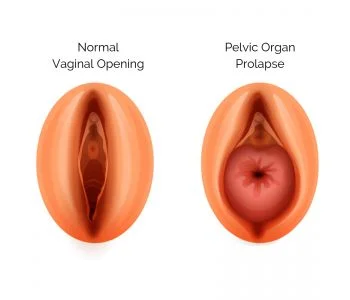A pelvic prolapse may involve one or more of your pelvic organs, including your bladder, cervix, uterus or rectum. The condition causes pelvic pain. Prolapse can be treated at Century Medical and Dental Center, a multi-disciplinary clinic that provides everything you need for your overall health. Don’t wait until you need prolapse surgery when non-invasive techniques suffice if you catch the condition early enough. Call for an appointment.

A woman’s abdomen and organs are supported by a complex web of muscles, ligaments and fascia or connective tissue. When these tissues weaken, the internal organs can drop out of position. If they drop low enough, a bulge forms in the vagina.
This condition, called a pelvic prolapse, often occurs as women age. It can be aggravated by childbirth, menopause or a hysterectomy. If you experience any of the uncomfortable symptoms, such as pelvic pressure, consult with your Brooklyn GYN doctor at Century Medical and Dental Center to treat the condition, as it can have significant long-term effects, such as persistent urinary tract infections.
In addition to the feeling of pressure and a possible bulge in your vagina, the most common symptom of a prolapse is pelvic pain. The pelvic organs consist of the reproductive organs — such as the uterus, cervix and vagina — and the bladder and rectum. Any or all of these organs can be affected if your pelvic floor muscles weaken. The bulge often felt in the vagina isn’t dangerous, but it can be painful. Other symptoms may include:
Pelvic prolapse doesn’t happen overnight. The condition tends to follow four stages of development:
Your doctor refers to your pelvic prolapse based on which organs have shifted down. Most of these conditions occur because of weakened pelvic muscles, usually due to natural childbirth. Other factors include aging, lung disease that causes frequent coughing or being overweight. The various types of prolapse include:
The subjects of urine leakage, constipation and painful sex may be uncomfortable to discuss with anyone. You must be able to trust your Brooklyn gynecologist enough to relate the problems you’re having so they can be addressed directly and efficiently. Pelvic prolapse may become extremely painful if untreated.
Your doctor at Century Medical and Dental Center always starts with the most conservative treatment options first. Treatments include:
In the U.S. alone, gynecologists perform approximately 200,000 surgical operations for pelvic prolapse conditions every year. Although pelvic prolapse usually isn’t life-threatening, surgery for prolapsed organs significantly improves your quality of life.
“Friendly doctors and staff! Office was clean and comfortable. Doctor was caring and knowledgeable, taking time to really listen to me and answer all my questions.” - Katie Thigpen
200 Livingston Str,
Brooklyn, NY 11201
908 reviews
770 Flatbush Ave
Brooklyn, NY 11226
234 reviews
827 11th Ave
Manhattan, NY 10019
88 reviews
260 Ave X
Brooklyn, NY 11223
261 reviews
180 Myrtle Ave
Brooklyn, NY 11201
90 reviews
2315 3rd Ave
New York, NY 10035
40 reviews
The best treatment for pelvic prolapse involves prevention. If you’re prone to prolapse issues due to your medical history or especially if you’ve already experienced a prolapse event, your doctor guides you toward preventive measures to ensure your pelvic muscles’ strength. Good preventive techniques include:
Have a frank discussion with your gynecologist regarding pelvic prolapse symptoms. Resume your daily activities without the discomfort and complications of a prolapsed uterus, cervix or bladder. Contact medical practitioners in Brooklyn at Century Medical and Dental Center today!
Century Medical and Dental Center is an accredited healthcare facility in NY that operates in accordance with Article 28, a public health law. This law regulates and recognizes accreditation for public healthcare facilities, ensuring they are licensed and operated correctly. By undergoing the Article 28 process and achieving accreditation, Century Medical and Dental Center demonstrates its commitment to meeting the highest standards of care.
As a multidisciplinary medical center, we have highly qualified doctors, nurses, and support staff who are working hard to provide the best medical care to patients in Midtown Manhattan, NY, Downtown Brooklyn, NY, including Brooklyn Heights, Dumbo, Prospect Heights, Park Slope, Clinton Hill, Boerum Hill, Red Hook, Harlem, Gravesneck, Flatbush, and Bedford-Stuyvesant.